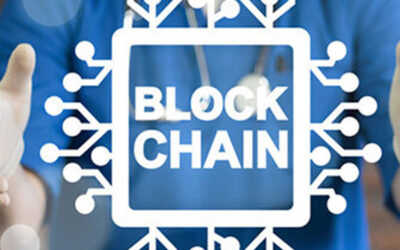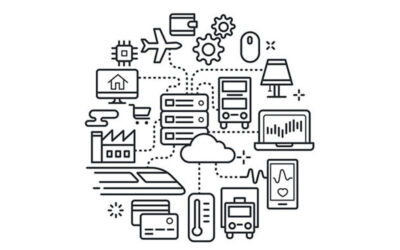When disastrous events like pandemics strike, the consequences for businesses and workers can be massive. If you’re an owner or a manager of one of the more than 30 million small businesses across the United States, you know the challenges: reduced access to capital for payroll, limited workforce capacity, inventory and supply chain shortfalls, and unexpected repair and maintenance costs, among other things. Workers also know the stress and strain from these incidents, from getting laid off or furloughed to having to take pay cuts, reduced hours, or additional risks during the workday.
The world has been experiencing enormous economic struggles at the hands of COVID-19. Report after report has been borderline apocalyptic, but there’s positive news as well: relief measures taken by the federal government have helped struggling businesses and workers on an unprecedented scale. The $2 trillion stimulus package under the March 27 CARES Act made headlines everywhere, with $377 billion of that package going directly to small business aid.
In addition to federal stimulus bills, state and local governments are doing what they can to support businesses. Firms located in Fitchburg, MA, for instance, can apply here for a grant of up to $2,500 from the City.
Also stepping up are corporations. Facebook, for instance, has its Small Business Grants Program which is offering $100 million in cash grants and ad credits. Businesses must have between two and fifty employees, been in business for over a year, and operate close to Facebook. The Boston area appears to be one of those locations. The deadline for applying appears to be May 8 at midnight.
Several resources new and existing grants available to non-profits and small businesses include Grant Watch, Duke University’s funding tracker, and Inc.com’s easy-to-read list of general, state, city and county-specific grants.
As it is the largest coordinated effort, the relief offered by the federal government provides the best place to start when looking for assistance with your small business. Here’s how relief is broken up:
Paycheck Protection Program (PPP)
The PPP is to small businesses as unemployment checks are to individuals—that is, a big deal. The $350 billion program creates a direct incentive to keep their workers on payroll. It works like this:
Any business, non-profit, or 501(c)(19) veterans’ organization that has fewer than 500 employees is illegible for up to $10 million in loans. Any portion of those loans used for certain purposes (outlined below) can be forgiven dollar for dollar, so long as the business keeps workers employed at their normal salary levels for eight weeks.
Qualifying expenditures that can be forgiven are:
- Payroll
- Any expenses involved in keeping workers on the books
- Rent, mortgage, and utilities
- Existing debt payments
Other information to know:
- The eight-week period should start on the date of closing, but for dates, requirements, and required paperwork, consult your specific lender.
- Interests rates on the loans are capped at 1%, which is low considering they were previously capped at 6%.
- No more than 25% of the amount forgiven can be for non-payroll related expenses.
- While eligibility restrictions (like putting up collateral) have been relaxed, making it easier to qualify, loan repayment terms have been reduced to just two years.
- Lenders may reduce the amount of forgiveness a business can receive on their loans in the event of layoffs or wage decreases (for workers earning under $100,000) before the eight weeks is up
There’s another caveat, this one perhaps the most important. The $350 billion allocated for the PPP took just 14 days to run out. While Congress is setting aside more money, there are fears that this amount could run out even faster. The number of applications is surely much higher than the 1.6 million approved PPP loans, meaning there is already a waiting list for money that Congress hasn’t allocated yet.
Economic Injury Disaster Loan Program (EIDL)
This program was expanded by $10 billion in order to address the immediate operating costs (including payroll and fixed debt) of small businesses struggling during COVID-19.
Eligibility requirements were reduced for EIDL. Sole proprietorships, independent contractors, and self-employed people, in addition to private non-profits, 501(c)(19) veterans’ organizations, and standard small businesses all qualify so long as they have fewer than 500 workers.
The SBA will provide working capital loans of up to $2 million to those who meet the above criteria have been adversely affected by the coronavirus. These loans have varying interest rates and repayment terms.
Emergency grants of up to $10,000 were also made available in advance of the above loans. These, being grants, do not have to be repaid. However, if you receive the advance, it will be deducted from your forgivable portion the PPP loans.
As with the PPP, the EIDL comes with a huge asterisk: as with the PPP, initial funds ran out quickly. There is also a significant backlog of requests. By the estimate of one small business loan adviser in Pennsylvania, a gigantic $400 billion has been requested via EIDL. To put that into perspective, the next round of relief from Congress may add just $60 billion to the program.
If you have already applied for an EIDL loan and have not heard anything regarding your application, you can check its status here.
SBA Debt Relief on Existing Loans
$17 billion was allocated to help existing SBA borrowers defer payments on their loans. Interest will still accrue on loans during the deferment period, though.
The SBA now automatically pays the principal, interest, and fees on current 7(a), 504, and microloans for six months as well as loans issued before September 27, 2020. Automatic deferral is also in effect for many borrowers of SBA Disaster (Home and Business) Loans, so long as the disaster loan was in “regular servicing” status as of March 1, 2020.
Recurring loan payments and established Preauthorized Debit (PAD) are not automatically cancelled, however, and the borrower is responsible for cancelling or continuing them.
SBA Express Bridge Loans
Business with previous relationships with the SBA that have applied for and are waiting for long-term financing may request Express Bridge loans. They may total up to $25,000 per recipient and must be used to “support the survival and/or reopening of the small business within the affected county.” The advantage with these loans is the speed with which they can get to you.
The SBA warns that lenders may require the borrower to pay down or pay off this loan if approved for long-term disaster financing. A PDF guide detailing Express loans is available on the SBA website.
Refundable Tax Credits
Regardless of size, businesses that are closed or distressed are eligible to receive refundable tax credits for leaving employees on payroll. The objective to make sure employees have a job to return to.
50% of payroll on the first $10,000 of compensation (including health benefits) will be credited per employee. In other words, the max credit for eligible employers per employee is $5,000. This qualifies for wages paid after March 12, 2020, and before January 1, 2021.
Other Resources
- The SBA’s resource list for small businesses
- Forbes’ list of banks offering loans
- Gusto.com’s SMBs blog, which includes an excellent and comprehensive spreadsheet outlining resources/options for each of the fifty states
- The CDC’s interim guidance for how employees and employers can create effective, temporary measures for continuing, safe work
- COVID Loan Tracker, the work of a Miami, FL, couple, and shared by CompTIA.
- Local Resources for your business



